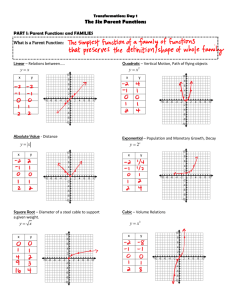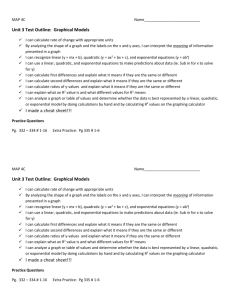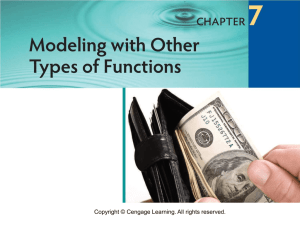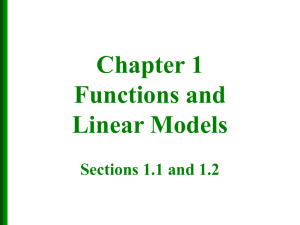MATH 1333
advertisement
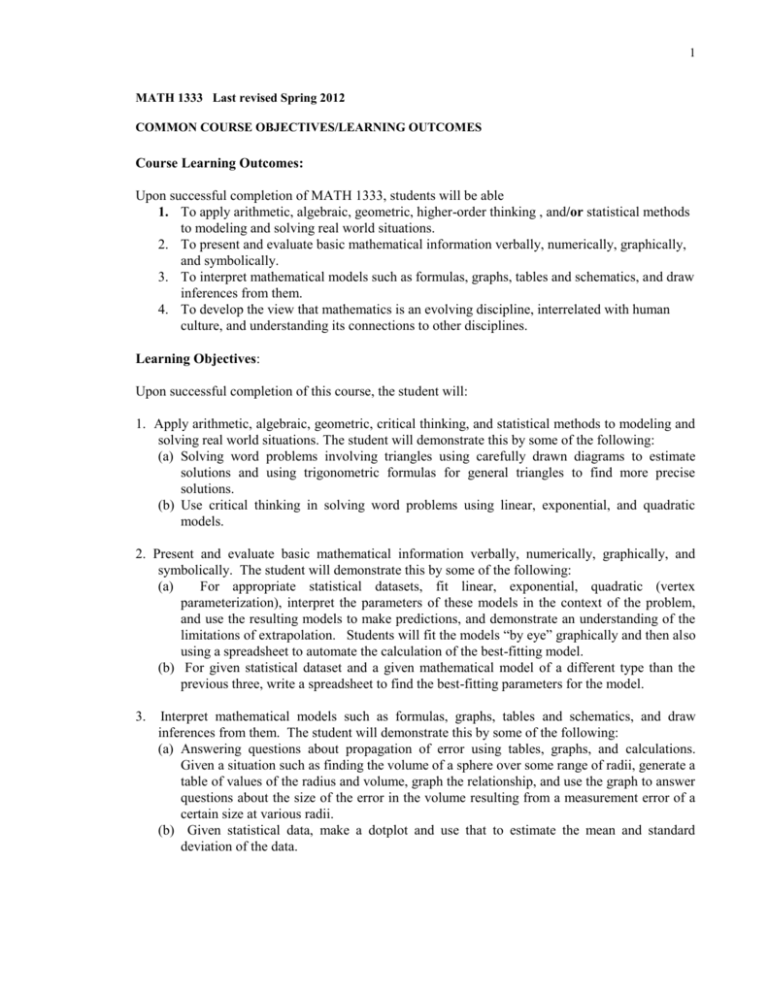
1 MATH 1333 Last revised Spring 2012 COMMON COURSE OBJECTIVES/LEARNING OUTCOMES Course Learning Outcomes: Upon successful completion of MATH 1333, students will be able 1. To apply arithmetic, algebraic, geometric, higher-order thinking , and/or statistical methods to modeling and solving real world situations. 2. To present and evaluate basic mathematical information verbally, numerically, graphically, and symbolically. 3. To interpret mathematical models such as formulas, graphs, tables and schematics, and draw inferences from them. 4. To develop the view that mathematics is an evolving discipline, interrelated with human culture, and understanding its connections to other disciplines. Learning Objectives: Upon successful completion of this course, the student will: 1. Apply arithmetic, algebraic, geometric, critical thinking, and statistical methods to modeling and solving real world situations. The student will demonstrate this by some of the following: (a) Solving word problems involving triangles using carefully drawn diagrams to estimate solutions and using trigonometric formulas for general triangles to find more precise solutions. (b) Use critical thinking in solving word problems using linear, exponential, and quadratic models. 2. Present and evaluate basic mathematical information verbally, numerically, graphically, and symbolically. The student will demonstrate this by some of the following: (a) For appropriate statistical datasets, fit linear, exponential, quadratic (vertex parameterization), interpret the parameters of these models in the context of the problem, and use the resulting models to make predictions, and demonstrate an understanding of the limitations of extrapolation. Students will fit the models “by eye” graphically and then also using a spreadsheet to automate the calculation of the best-fitting model. (b) For given statistical dataset and a given mathematical model of a different type than the previous three, write a spreadsheet to find the best-fitting parameters for the model. 3. Interpret mathematical models such as formulas, graphs, tables and schematics, and draw inferences from them. The student will demonstrate this by some of the following: (a) Answering questions about propagation of error using tables, graphs, and calculations. Given a situation such as finding the volume of a sphere over some range of radii, generate a table of values of the radius and volume, graph the relationship, and use the graph to answer questions about the size of the error in the volume resulting from a measurement error of a certain size at various radii. (b) Given statistical data, make a dotplot and use that to estimate the mean and standard deviation of the data. 2 4. Understand that mathematics is an evolving discipline, interrelated with human culture, and understand its connections to other disciplines. The student will demonstrate this by some of the following: (a) Discussing how giving the precision of measurements through “significant digits” is used in many applied situations as an approximation to a more detailed analysis of propagation of error. (b) Modify the simple linear, quadratic, and exponential models to take into account additional considerations such as different starting values for the input variable or exponential decay to a baseline other than zero.
